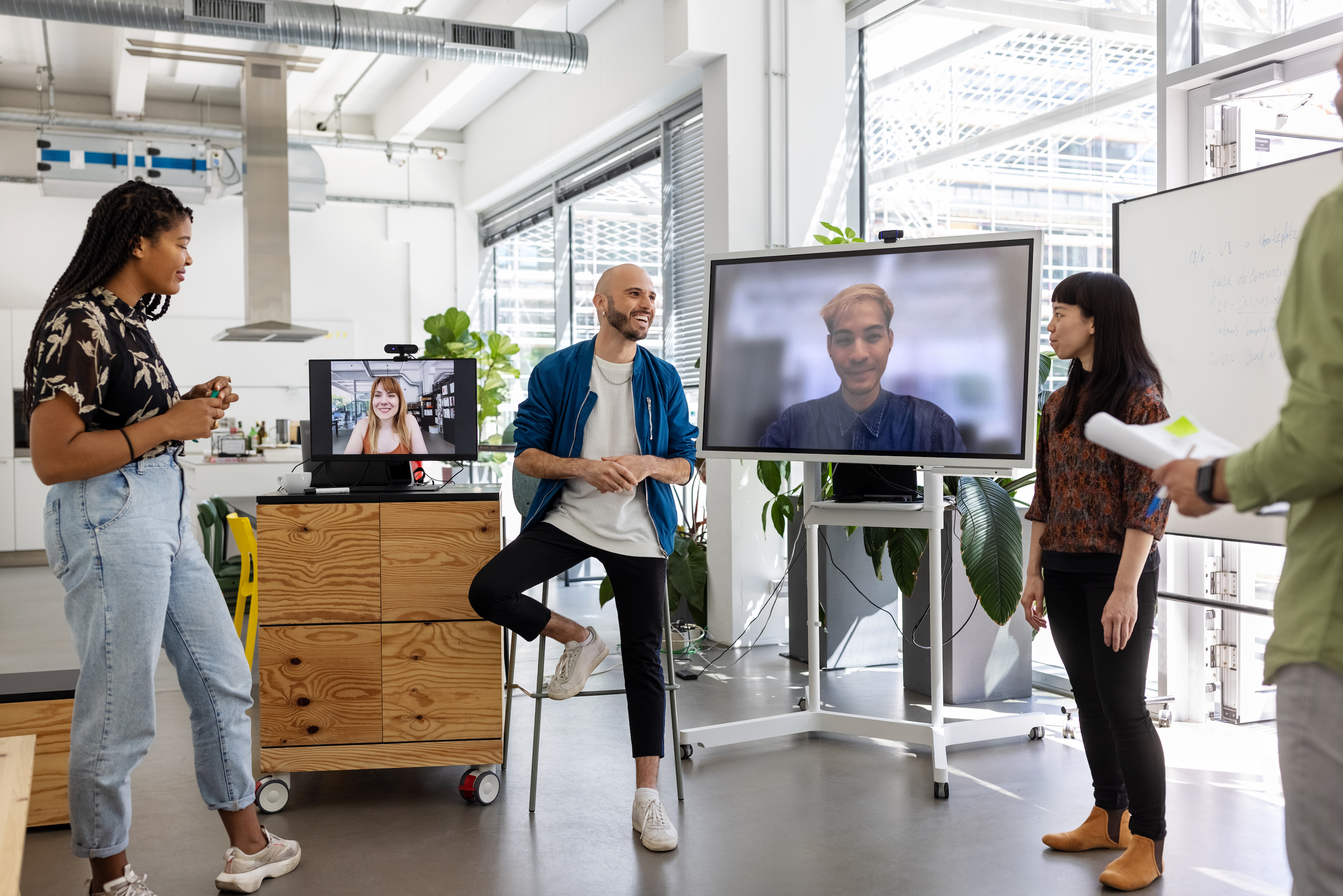AV Tech Plays Key Role in Boosting Engagement in Hybrid Model
For businesses to benefit from the hybrid model, employees need to be equipped with high quality technology—allowing them to stay engaged and productive.

With the Great Resignation predicted to continue for the next for two to three years, it’s clear that now is the time for businesses to wake up to the importance of attracting and retaining the best talent. Since its wide implementation over the past few years, many employees no longer see hybrid working as an added benefit—they expect it. However, for businesses to benefit from the hybrid model, employees need to be equipped with high quality technology—allowing them to stay engaged and productive.
Although offering hybrid working is now crucial to attract employees, 65 percent of employers are concerned about workforce management issues that will occur when switching to a permanent hybrid model. When equipped with low-quality tools, this hesitance is understandable; jolted video, fuzzy audio and a lack of visibility can all reduce the quality of collaborative work and cause employees to disengage from tasks. However, by upgrading old tech and providing employees with intuitive tools – hybrid can be more powerful than ever.
We know happy employees are engaged ones, with research from the University of Oxford finding that happy workers are 13 percent more productive. To maintain this productivity while teams work remotely, technology is key. Whether that be by using AI integrated cameras to lock on to a speaker, blending remote and in-person meetings with video conferencing systems or simply by offering headsets that help employees be heard: engagement is crucial for warding off the Great Resignation.
[ Logitech's Roadmap to IC22 ]
All Eyes Engaged
When teammates are split between in-office and remote, it’s important to invest in technology that enables everyone to be seen and heard clearly, to keep meetings productive—something which can be tricky when operating with glitchy technology. What’s more, great technology should be seamless. We’ve all been in meetings where precious minutes are wasted trying to connect technology, but systems with one-click joining and compatibility with multiple devices can avoid this. In a meeting room, this can be achieved by installing cameras that are simple to use, and automatically focus on the speaker of the meeting such as Logitech’s Rally Camera and Rally Bar. With the touch of a button, colleagues can connect wherever they are and with the ability to zoom in to a specific presenter in the room they can better connect and engage with each other. With such technology hybrid experiences are the same, if not enhanced, quality as in-person meetings.
[ Valens Semiconductor, Logitech Collaborate to Simplify Videoconferencing Deployments ]
Collaboration is King
As a step beyond video conferencing, other innovative collaboration solutions are now being developed too. For example, Logitech’s AI-powered whiteboard camera Scribe enhances hybrid collaboration between colleagues for in scenarios like brainstorming and creative planning. While online sticky note apps can help with this, there’s nothing as collaborative as grabbing a pen and drawing out ideas on a whiteboard. With its simple-to-use design and enhanced integrations with Microsoft Teams Rooms and Zoom Rooms, Scribe gives those not in the room a clear, real-time view of the whiteboard. Using built-in artificial intelligence, it can render the teacher transparent, so those working remotely can see the whiteboard without obstructions, and it automatically enhances the colour of markers, so the content is easier to read and even has the ability to detect non-digital content like sticky notes.
A daily selection of features, industry news, and analysis for AV/IT professionals. Sign up below.
This type of technology can help to ensure that all employees, whether remote or in-person, get the same quality experience. If there is a divide between the two groups of people, for example with only in-person team members being able to see and write on a whiteboard during a brainstorm, projects can become disjointed, and remote team members can become disengaged. Hybrid working requires strong team collaboration, and by investing in their ability to collaborate, businesses can ensure they’re doing their bit to ensure productivity in the hybrid work environment.
[ Logitech RightSight2 Levels the Playing Field for Hybrid Workers ]
Keep the Noise Down
Muffled microphones, noisy backgrounds and cavernous meeting rooms are all audio issues that can significantly reduce the quality of hybrid working and affect both collaboration and engagement. For example, headsets with poor noise cancelling can let in audio distractions that can disturb the flow of work and frustrate and stunt productivity.
To combat this, headsets with noise cancelling ability and high-quality audio drivers, such as the Zone Wireless, allow workers to embrace the freedom that hybrid working offers and set up their workplace anywhere without fear of distraction. Clear microphones will also help them be heard in meetings, again increasing engagement with their colleagues and tasks.
With the right technology, it’s possible to overcome the potential barriers of not having everyone in one room, and ensure employees feel that they’re contributing the same whether in-person or remote. Using high-quality meeting room cameras with intuitive controls and utilising other innovations in AV technology is just one of many means to keep your employees happy, confident, and valued at work.

Nigel Penny has been with Logitech since 2018. His background in infrastructure, networking, and IT sales for the past 20 years provided a strong foundation for him to head Logitech's enterprise videoconferencing sales team.
